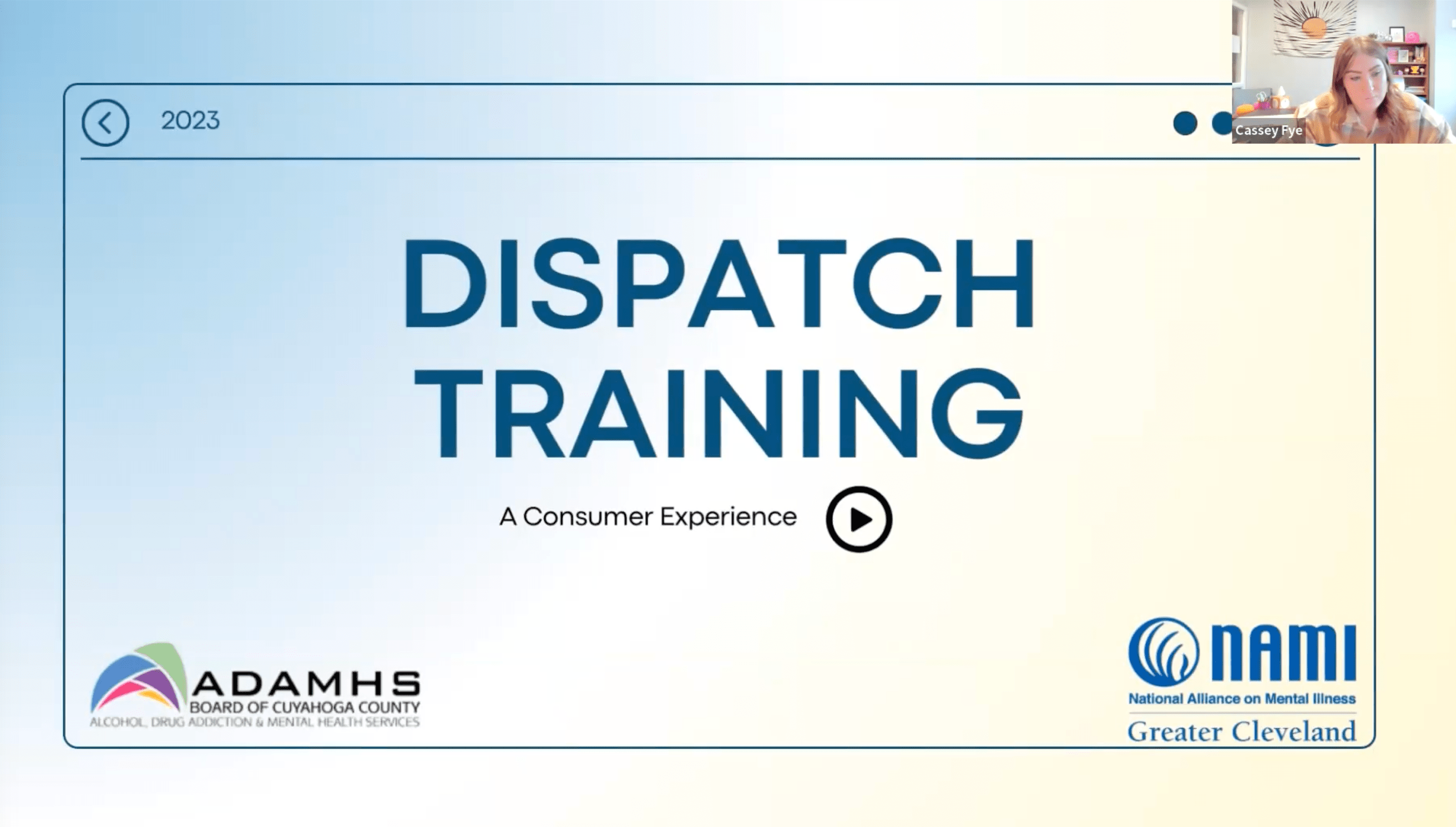In a recent Mental Health Response Advisory Committee (MHRAC) Community Engagement Subcommittee meeting, members discussed how to teach the behavioral health community about the Cleveland Division of Police’s Crisis Intervention Team (CIT) officers more effectively.
Documenter Nani Faye Palmer covered the meeting and wondered: Who decides what type of officer responds to an emergency call – the caller or dispatch?

The short answer: Both.
Signal Cleveland talked to Angela Cecys, senior strategist for public safety and health with the Cleveland Department of Public Health, about how a 911 call gets routed. We also asked her what happens when calls are identified as a mental health crisis.
First, let’s talk about what a specialized crisis intervention trained (SCIT) officer does.
What is a specialized CIT officer?
All Cleveland Division of Police officers go through eight hours of crisis intervention training.
But SCIT officers volunteer for 40 hours of training, where they learn to de-escalate behavioral health crises and connect people to the right resources.
The city unveiled an open data portal in April and recently added CIT data from 2023. According to the data, about 10% of the force, or 122 officers as of May 10, have completed the 40-hour specialized training.
How is a 911 call routed?
The city’s 911 communications center has call takers who answer 911 calls and dispatchers who send the appropriate first responder to your call.
When someone calls 911, the call taker asks a series of questions, starting with, “Police, fire or EMS?” if the caller isn’t sure, the call taker asks follow-up questions to learn more about the situation and takes notes.
Any 911 caller can ask to have an SCIT officer respond to their situation. In addition, the call taker or dispatcher may decide the situation would be best handled by an SCIT officer and dispatch one if available.
Coding calls for mental health
Once the dispatcher looks at the call taker’s notes, they assign a code. A call can be coded as violent crisis intervention (VCI), non-violent crisis intervention (NVCI), suicide in progress, or suicide threats, among several other categories.
Non-SCIT officers can also go to a scene and identify it as a behavioral health situation. In those cases, they can request an SCIT officer or a co-response team to go to the scene if they’re available.
What is co-response? Co-response is a program where a police officer is teamed up with a mental health expert to respond to or follow up on 911 calls that involve a mental health crisis.
Cecys said people are encouraged to say upfront if a situation involves mental health.
“Even if it’s a violent situation, if it’s a violent situation like someone is actively threatening suicide with a knife or a gun, the police still need to know it’s behavioral health and it’s not just like a weapon or violence call,” Cecys said. “And then it gets coded a certain way.”
Demand is higher than availability
If there is a weapon, police will always respond.
If there isn’t an SCIT officer available, other officers will go to the call and a SCIT officer or a co-response team might follow up when they become available.
Cleveland police officers are not required to become SCIT officers. Joining the team is voluntary, and there are no incentives. That is because the city wants officers with the right heart and mind who want to respond to behavioral health calls to join the team, Cecys said.
If a police supervisor thinks an officer would be a good fit, they can talk to that officer one-on-one and encourage them to join the team.
SCIT response improving
The percentage of crisis calls that SCIT officers are responding to is increasing. When the SCIT program started in 2020, SCIT officers were on the scene at fewer than 10% of crisis calls.
By 2022, there were specialized CIT officers at almost 32% of calls. And in 2023, specialized CIT officer response rose to 42%.





